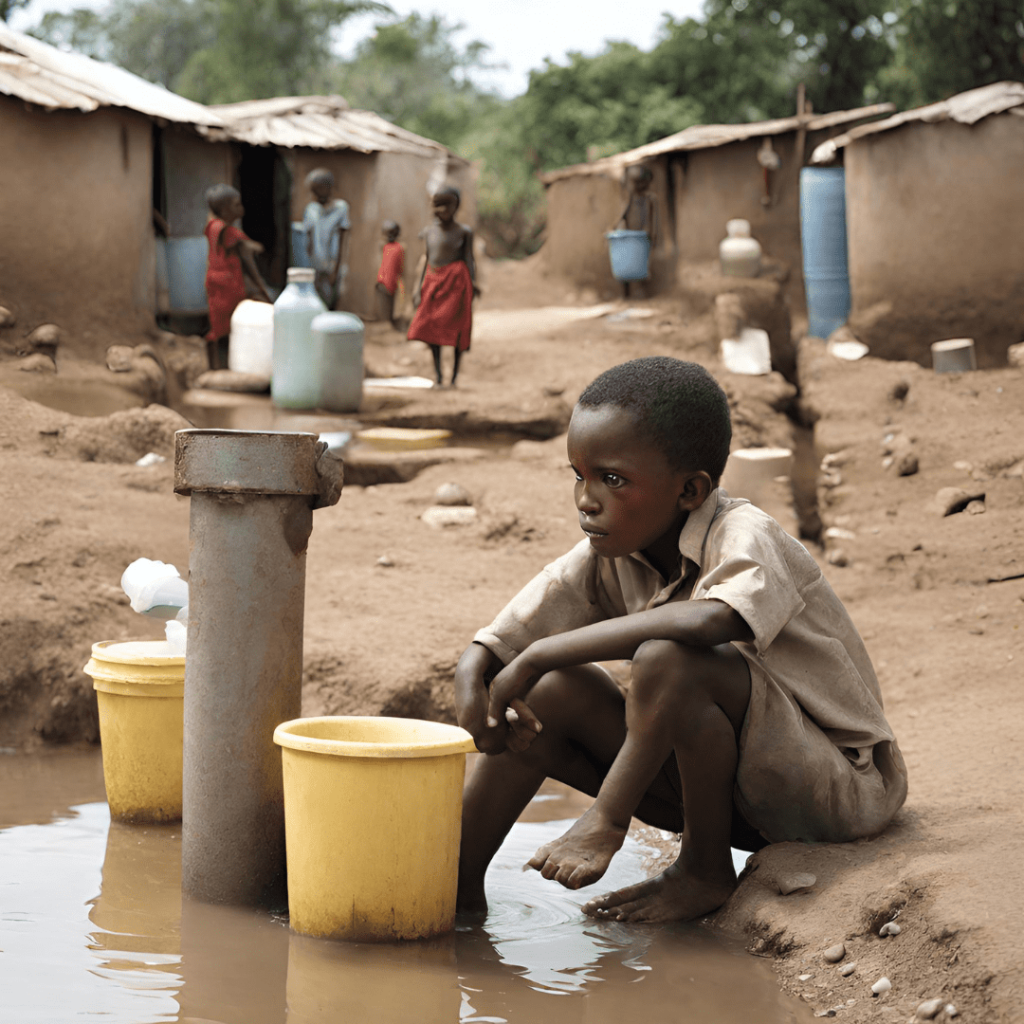Great Health Great Fitness
“Conquering 10 Health Challenges in Developing Countries: A Bold Journey Towards Transformation and Resilience.”
In the journey to conquer health challenges in developing countries, resilience and transformation are imperative. From tackling shortages in healthcare Health Challenges infrastructure to overcoming barriers to access, innovative solutions like telemedicine and community health worker programs offer hope. By embracing these bold approaches, we pave the way for a healthier, more equitable future for all.

Introduction
Health challenges in developing countries pose significant obstacles to the well-being of millions of people, reflecting complex interactions between socio-economic factors, healthcare infrastructure, and cultural considerations. This blog post aims to provide a comprehensive overview of the prevalent health issues faced by populations in developing nations, exploring initiatives, and discussing potential solutions.
I. Empowering Resilience: Addressing Health Challenges, Infectious Diseases, and Limited Access to Vaccination in Developing Countries

One of the primary health challenges in developing countries is the prevalence of infectious diseases such as malaria, tuberculosis, and HIV/AIDS. Limited access to vaccinations exacerbates these issues, leading to higher morbidity and mortality rates. This section will delve into the impact of these diseases on communities and discuss ongoing efforts to improve vaccination coverage.
II. Health Challenges Maternal and Child Health Disparities

Maternal and child health disparities persist in developing countries, with inadequate prenatal care, high maternal mortality rates, and challenges in child nutrition. This section will explore the root causes of these disparities, highlighting the importance of improving maternal and child healthcare infrastructure and implementing educational programs.
III. Lack of Access to Clean Water and Sanitation

Access to clean water and sanitation is a fundamental determinant of health. In many developing countries, communities face challenges related to waterborne diseases due to inadequate sanitation facilities. This section will discuss the impact on public health and explore initiatives aimed at improving water and sanitation infrastructure.
IV. Limited Healthcare Infrastructure
Insufficient healthcare infrastructure, including a shortage of healthcare professionals and facilities, is a critical challenge in developing countries. This section will examine the barriers to healthcare access and discuss innovative solutions, such as telemedicine and community Health Challenges worker programs, to bridge the gap.
One of the primary barriers to healthcare access in developing countries is the shortage of trained healthcare professionals, including doctors, nurses, and other allied health workers. Many developing countries face challenges in recruiting and retaining qualified healthcare professionals due to factors such as low wages, inadequate training opportunities, and migration to urban areas or abroad. Addressing this shortage requires investment in healthcare workforce development, including expanding training programs, providing incentives for healthcare professionals to work in rural and remote areas, and strengthening regulatory frameworks to ensure quality standards.
In addition to shortages of healthcare professionals, limited healthcare infrastructure, including hospitals, clinics, and diagnostic facilities, further restricts access to healthcare services in developing countries. Many rural and remote communities lack basic healthcare facilities,Health Challenges forcing residents to travel long distances to access medical care. Improving healthcare infrastructure requires investment in the construction and renovation of healthcare facilities, as well as ensuring access to essential medical equipment and supplies. Public-private partnerships can also play a crucial role in expanding healthcare infrastructure, leveraging the resources and expertise of both the public and private sectors to address gaps in service delivery.
To overcome these barriers and improve healthcare access in developing countries, innovative solutions such as telemedicine and community health worker programs have emerged as promising approaches. Telemedicine enables remote consultation and diagnosis, allowing patients to access healthcare services from anywhere, even in areas where healthcare facilities are scarce. By leveraging digital technologies, telemedicine can expand access to specialized medical care, improve health outcomes, and reduce healthcare costs. Community health worker programs train local individuals to provide basic healthcare services and health education within their communities. These programs play a vital role in bridging the gap between communities and formal healthcare systems, particularly in rural and underserved areas where access to healthcare is limited.
V. Socio-economic Determinants of Health
Socio-economic factors play a significant role in health outcomes in developing countries. Poverty, lack of education, and gender inequality contribute to Health Challenges disparities. This section will explore the interconnectedness of socio-economic factors and health, emphasizing the need for holistic interventions.
VI. Non-Communicable Diseases and Lifestyle Factors
While infectious diseases remain a significant concern, the burden of non-communicable diseases (NCDs) is rising in developing countries. This section will explore the impact of lifestyle factors, including diet, physical activity, and tobacco use, on the prevalence of NCDs. Initiatives promoting healthy behaviors and early detection will be discussed.
Poor dietary habits characterized by high consumption of processed foods, sugary beverages, and inadequate intake of fruits and vegetables contribute to the development of NCDs such as obesity, cardiovascular diseases, and diabetes. Limited access to Health Challenges nutritious foods and lack of awareness about healthy eating exacerbate this issue. Promoting nutrition education, supporting local food production, and implementing policies to regulate the availability and marketing of unhealthy foods are essential steps in addressing this challenge.
Inadequate physical activity levels are another significant contributor to the NCD burden in developing countries. Sedentary lifestyles due to urbanization, reliance on motorized transportation, and lack of recreational facilities contribute to increased risk of obesity, hypertension, and other NCDs. Encouraging regular physical activity through community-based programs, promoting active transportation options such as walking and cycling, and creating safe and accessible recreational spaces can help mitigate this risk.
Tobacco use remains a major preventable cause of NCDs, including lung cancer, cardiovascular diseases, and respiratory conditions. Despite efforts to implement tobacco control policies, tobacco consumption remains high in many developing countries due to factors such as tobacco industry marketing tactics and cultural norms. Strengthening tobacco control measures, Health Challenges such as higher taxes on tobacco products, comprehensive smoke-free laws, and public awareness campaigns highlighting the health risks of tobacco use, are crucial in reducing tobacco-related NCDs.
VII. Mental Health Stigma and Limited Resources
Mental health challenges are often overlooked in developing countries due to stigma and limited resources. This section will shed light on the impact of mental health issues, discuss cultural perceptions, and explore strategies to reduce stigma. Initiatives aimed at integrating mental health into primary care settings will be highlighted. For more information, you can check out this link. Navigating Stress in the Modern World: 7 Strategies for Better Mental Health.
VIII. Global Health Disparities and International Collaboration
Global health disparities demand international collaboration. This section will discuss the role of organizations like the World Health Organization (WHO) and non-governmental organizations (NGOs) in addressing health challenges in developing countries. The importance of sustainable development goals and collaborative efforts for lasting impact will be emphasized.
IX. Community Empowerment, Health Education and Health Challenges
Empowering communities through health education is essential for sustainable change. This section will explore the role of community-based interventions, health literacy programs, and partnerships with local organizations in promoting better health outcomes. Case studies showcasing successful community empowerment initiatives will be highlighted.
Health literacy programs are instrumental in equipping individuals with the knowledge and skills necessary to make informed decisions about their Health Challenges. These programs aim to improve understanding of health-related information, including preventive measures, treatment options, and navigating healthcare systems. By enhancing health literacy levels within communities, individuals are empowered to take proactive steps to maintain their health and well-being, ultimately leading to better health outcomes.
Partnerships with local organizations are invaluable in mobilizing resources, expertise, and support for community health initiatives. Collaborating with community-based organizations, non-governmental organizations, religious institutions, and other stakeholders enables healthcare providers to reach a broader audience and leverage existing networks and infrastructure. Additionally, local organizations often possess valuable insights into the cultural, social, and economic dynamics of communities, which are essential for designing culturally appropriate and contextually relevant health interventions.
Case studies showcasing successful community empowerment initiatives serve as inspiration and provide valuable insights into effective strategies and best practices. By highlighting examples of impactful interventions, policymakers, healthcare professionals, and community leaders can learn from successful experiences and replicate successful approaches in other settings. These case studies also underscore the importance of investing in community-driven solutions and building partnerships with local stakeholders to achieve sustainable improvements in health outcomes.
X. Future Prospects and Recommendations
To overcome health challenges in developing countries, a forward-looking approach is crucial. This section will discuss potential future prospects, including advancements in healthcare technology, increased investment in healthcare infrastructure, and the importance of political commitment. Recommendations for policymakers, healthcare professionals, and the global community will be outlined.
To overcome health challenges in developing countries, a forward-looking approach is imperative. Embracing advancements in healthcare technology, such as telemedicine and mobile health applications, holds promise for expanding access to vital healthcare services in remote regions. Concurrently, increased investment in healthcare infrastructure, including the construction and renovation of facilities and ensuring the availability of essential medical supplies, is paramount.
Yet, these efforts necessitate unwavering political commitment, with governments prioritizing healthcare in policy agendas and collaborating with international partners. Moreover, capacity building among healthcare workers through comprehensive training programs is essential to enhance service delivery. Engaging communities in decision-making processes, coupled with empowering them to actively participate in their healthcare, fosters sustainable health outcomes. Encouraging research and innovation, alongside fostering collaboration and partnerships across sectors, further strengthens the resilience of healthcare systems in addressing current and future challenges.
Conclusion
In summary, addressing health challenges in developing countries requires a comprehensive and collaborative effort. By understanding the intricate interplay of infectious diseases, maternal and child health disparities, socio-economic determinants, and other factors, stakeholders can work towards implementing effective, sustainable solutions. With a focus on community empowerment, education, and international collaboration, the global community can strive to improve health outcomes and create a more equitable healthcare landscape for all.
